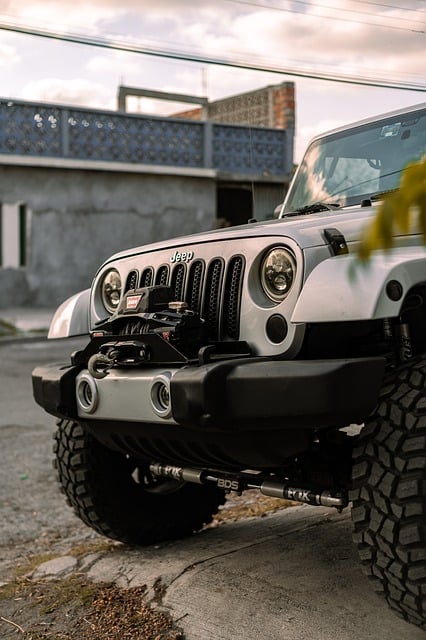Comprehensive car insurance provides broad protection against unforeseen vehicle incidents, including theft, vandalism, natural disasters, and accidental damage. It offers peace of mind by covering repairs or replacement costs, ensuring vehicle integrity and financial security. Understanding coverage limits, deductibles, and exclusions is vital for making informed decisions. This type of insurance is crucial for mitigating significant out-of-pocket expenses from unexpected events, especially in high-risk areas or severe weather conditions.
“Uncertainty on the road? Understand the comprehensive power of vehicle damage insurance. This in-depth guide explores what exactly ‘comprehensive car insurance’ covers, clarifying its role as a protective shield for your vehicle against unforeseen circumstances.
From navigating common exclusions to maximizing benefits, we demystify this crucial policy. Discover how it differs from other insurance types and learn the step-by-step claims process. By the end, you’ll know exactly what comprehensive car insurance covers, empowering you to make informed decisions.”
Understanding Comprehensive Car Insurance: A Detailed Overview

Comprehensive car insurance, often referred to as ‘all-risks’ coverage, is a type of motor insurance policy that offers protection against a wide range of unforeseen events. It goes beyond the standard liability and collision coverages by providing peace of mind for drivers facing unexpected vehicle damage. When you have comprehensive insurance, you’re covered not just for accidents and collisions, but also for various other incidents such as theft, natural disasters (like floods or hail damage), vandalism, and even mechanical failures.
This type of insurance policy is designed to protect your vehicle’s financial value in the event of total loss or significant damage. It will typically cover the cost of repairs or, if the vehicle is deemed a total write-off, help replace it with a similar model. Understanding what comprehensive car insurance covers is essential for drivers who want to be prepared for any eventuality on the road. By ensuring this coverage, policyholders can avoid substantial out-of-pocket expenses and potential financial strain from unexpected vehicle damage.
The Scope of Coverage: What Exactly Does It Include?

Comprehensive car insurance is designed to protect drivers from a wide range of unexpected events that could damage their vehicles. When you have this type of coverage, what exactly does it include? Comprehensive insurance typically covers damages beyond what a standard auto policy offers, such as collisions with other vehicles, natural disasters (like floods or hail), and even theft or vandalism. This means if your car is damaged in a way that’s not covered by collision or liability insurance—for instance, if someone steals it or a tree branch falls on it during a storm—comprehensive insurance will step in to help pay for the repairs or replacement.
The key benefit of comprehensive car insurance is peace of mind, knowing that you’re protected from many unforeseen circumstances. It can cover various incidents like hitting a deer, getting trapped in floodwaters, or even damage caused by rioting. However, it’s important to understand what’s excluded, such as regular wear and tear, certain types of weather events (like heavy snow or ice), and willful damage. Always review the policy details to ensure you’re aware of the scope of coverage and exclusions specific to your plan.
Common Exclusions and Limitations to Be Aware Of

Comprehensive car insurance, often referred to as ‘full coverage’, is designed to protect policyholders from financial loss in a wide range of situations, what does comprehensive car insurance cover? While it offers a high level of protection, there are still certain exclusions and limitations to be aware of. Common exclusions include events like acts of war, terrorism, natural disasters, or damage caused while the vehicle is being driven by an uninsured driver.
Additionally, some policies may have specific limitations on what’s covered. For instance, comprehensive insurance typically covers damage to your car from theft, vandalism, and accidents, but it might not cover regular wear and tear or pre-existing damage. It’s also important to note that policies can vary in their deductibles, which is the amount you’ll need to pay out of pocket before your insurance kicks in. Understanding these exclusions and limitations is crucial when deciding if comprehensive car insurance is right for you.
How Comprehensive Insurance Protects Against Various Damages

Comprehensive insurance for vehicle damage, often referred to as ‘full coverage’, is a type of car insurance that provides protection against a wide range of potential risks and damages beyond what a standard policy offers. When you have comprehensive insurance, you’re not just covered for accidents and collisions; it also shields you from various other perils. This includes damage caused by natural disasters like floods, wildfires, or extreme weather events, as well as issues arising from man-made hazards such as vandalism, theft, and even animal encounters.
One of the key advantages of comprehensive insurance is that it covers a broad spectrum of unforeseen circumstances. For instance, if your car is damaged due to falling debris during a storm, or it’s targeted by thieves who break in and cause extensive havoc, these incidents are typically covered under comprehensive policies. Moreover, it can also protect against costs associated with legal liability, medical expenses for injuries sustained in an accident, and even loss of personal items kept within the vehicle. This level of coverage offers peace of mind, ensuring that you’re financially secured regardless of the circumstances that may arise.
Comparison with Other Types of Car Insurance Policies

Comprehensive car insurance stands out from other types of vehicle coverage, such as liability or collision policies, by offering broader protection for your car. While liability insurance is crucial for covering damages and injuries caused to others in an accident, comprehensive insurance goes above and beyond. It protects against a wide range of potential hazards, including damage from natural disasters (like floods, storms, or hail), theft, vandalism, and even accidental damage like hitting a deer.
In contrast with collision insurance, which primarily covers accidents involving another vehicle or stationary object, comprehensive insurance provides more complete coverage. Unlike liability policies that focus on protecting you legally and financially in the event of an accident causing harm to others, comprehensive car insurance is designed to safeguard your financial investment in your vehicle. It can cover repairs or even total loss, giving you peace of mind knowing your car is protected from many unforeseen circumstances.
Benefits of Having Comprehensive Car Insurance

Having comprehensive car insurance offers numerous advantages for vehicle owners, providing peace of mind and financial protection against unexpected events. One of its key benefits is that it covers a wide range of damages beyond typical accidents, including theft, vandalism, natural disasters, and even accidental damage to personal belongings inside your car. This means that if your vehicle is stolen or damaged by fire, you’re not left footing the bill for replacement costs.
Moreover, comprehensive insurance can help you avoid financial strain during unexpected repairs. When you’re covered, the policy will take care of the expenses, allowing you to focus on getting your vehicle back on the road safely and efficiently. This type of insurance is especially valuable if you drive frequently in areas with higher crime rates or harsh weather conditions, ensuring that you’re prepared for any eventuality that may impact your vehicle’s integrity.
Claims Process: Step-by-Step Guide for Policyholders

When you have comprehensive car insurance, understanding the claims process is crucial to ensuring a smooth experience after vehicle damage occurs. Here’s a step-by-step guide for policyholders:
1. Report the Incident: Immediately contact your insurance provider upon experiencing vehicle damage. Provide them with details like your policy number, date and location of the incident, and a brief description of what happened. If possible, take photos of the damage to document it.
2. File a Claim: Fill out the claim form provided by your insurer. This can often be done online or over the phone. You’ll need to supply information about the incident, the damaged vehicle, and any witnesses. Make sure to keep copies of all correspondence and documents related to the claim for your records.
3. Inspect the Damage: Allow a qualified mechanic or your insurance company’s appraiser to inspect your vehicle. They will assess the extent of the damage and provide an estimate for repair costs, ensuring what Does Comprehensive Car Insurance Cover? is accurately determined.
4. Get Repairs Done: Once approved, take your vehicle to a trusted repair shop or dealership. Ensure they are authorized by your insurance company to handle comprehensive claims to guarantee proper repairs that align with what your policy covers.
5. Track Progress and Receive Payment: Keep in touch with your insurer throughout the repair process. They will verify the work, pay the repair bill directly to the shop (or issue a check to you if required), and inform you when the claim is closed.
Choosing the Right Coverage Limits for Your Vehicle

When considering comprehensive car insurance, understanding what does comprehensive car insurance cover is crucial. This type of coverage is designed to protect you from a wide range of potential risks beyond typical accidents, including natural disasters, theft, vandalism, and even damage caused by animals. It’s essential to choose coverage limits that align with your vehicle’s value and your financial comfort level.
While the standard limit for comprehensive insurance is often around $1,000 or 1% of your vehicle’s value, this may not be sufficient for more expensive models. Evaluate your vehicle’s worth and consider higher limits if needed. Remember, adequate coverage ensures that you’re protected against significant financial burdens in case of unexpected events, allowing you to focus on recovery rather than immediate out-of-pocket expenses.
Tips for Maximizing Your Comprehensive Car Insurance Benefits

Comprehensive car insurance, often misunderstood, is a crucial safety net for vehicle owners. Beyond covering accidents, it protects against a range of unforeseen events like natural disasters, theft, and vandalism. To maximize its benefits, understand what’s covered under this policy. Comprehensive insurance typically includes repairs or replacements for your vehicle, up to the actual cash value (ACV), minus your deductible. This ensures you’re not left with a significant financial burden when faced with unexpected damage.
Maximize these advantages by choosing a policy that suits your needs. Consider the limits of coverage and deductibles carefully; higher limits offer more protection but increase premiums. Additionally, keep detailed records of service history and modifications to facilitate smoother claims processes. Regularly reviewing your policy and staying informed about what’s included can help you make informed decisions, ensuring you’re not underinsured when an unforeseen event strikes.
